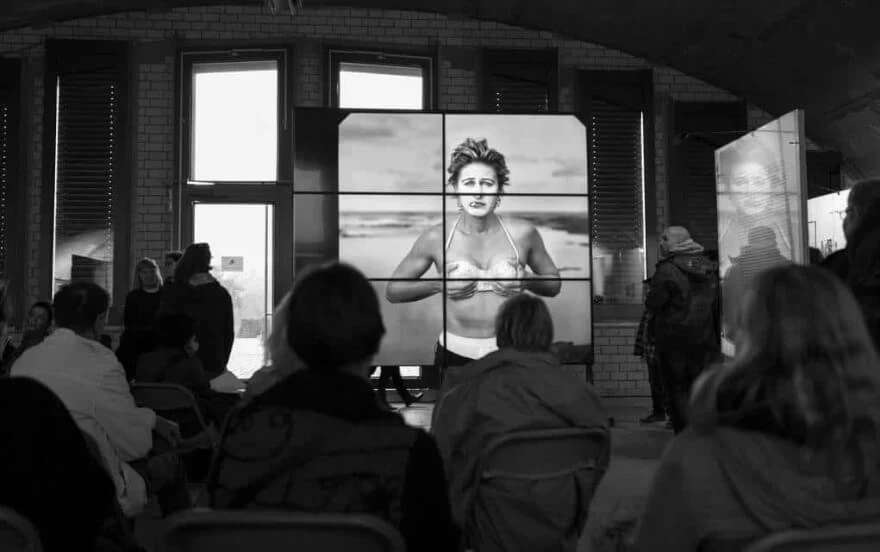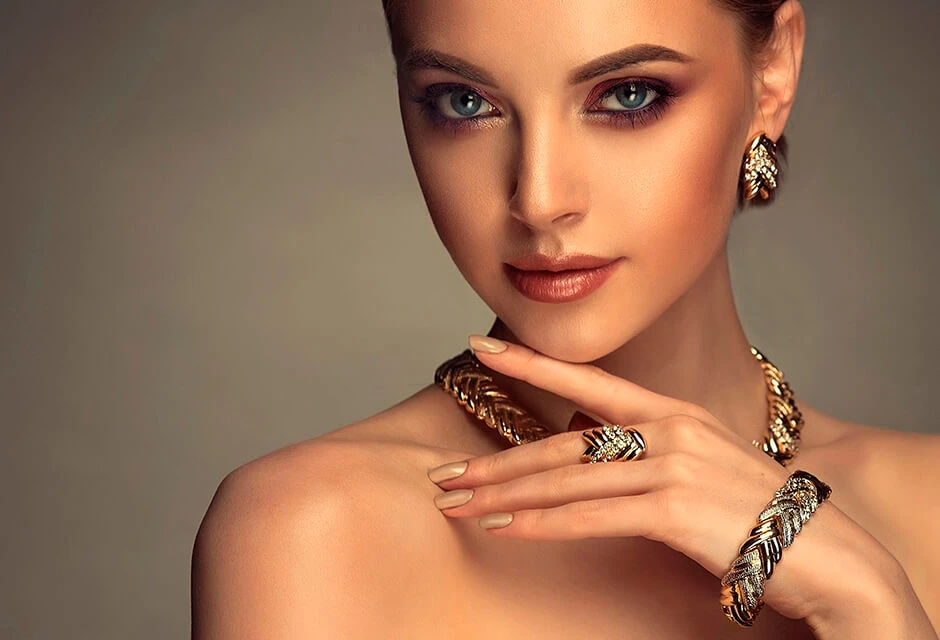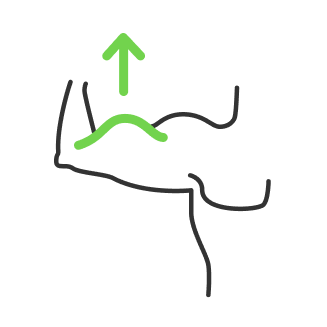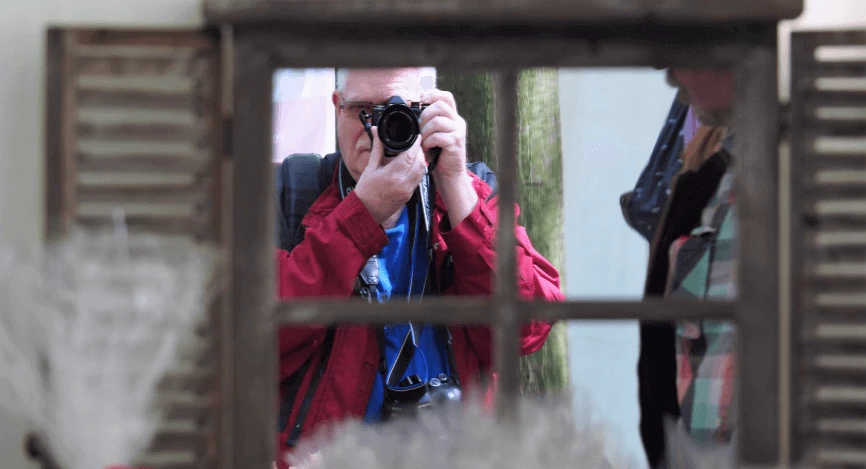Annie Leibovitz: iconic portrait photographer

- Annie Leibovitz Photographer Biography
- “Fashion wasn’t anything I wanted to be involved with”
- Annie Leibovitz Portraits
- Before Photoshop was invented
- Matador Photoshoot
- Crucial shifts in Leibovitz Photographer Career
- Annie Leibovitz Artwork Exhibitions and Awards
- Life Through a Lens
- Pilgrimage
- Alice in Wonderland for Vogue
- Present Days Contribution
Annie Leibovitz Photographer has been shaping the visual landscape for over five decades. Before the portrait mode was even a term, she was renowned for her captivating portraits that blend artistry with raw emotion. Leibovitz's work transcends mere imagery, capturing the essence of her subjects with unparalleled depth and insight. In this article, we review Annie Leibovitz photos and exhibitions, dive deep into the photographer’s biography, and see her art path to the present day and what is the outcome of her artistic nature.

Annie Leibovitz Photographer Biography
Born in Connecticut in 1949, Annie Leibovitz, an acclaimed American photographer, inherited a nomadic lifestyle due to her father's military career. She captured her earliest images amidst the backdrop of the Philippines during the Vietnam War, where her family was stationed.

“Fashion wasn’t anything I wanted to be involved with”
Her journey into photography commenced in 1970 when she joined the ranks of Rolling Stone magazine as a photographer. Within a short span, she ascended to the position of Chief Photographer, a testament to her burgeoning talent.

Initially drawn to painting, Leibovitz later channeled her artistic expression through the lens of a camera while studying at the San Francisco Art Institute. Annie Leibovitz wants to set the record straight from the start: Fashion photography isn't her forte. Yet, her latest publication, "Wonderland" (Phaidon), showcases a collection of fashion-centric images predominantly captured for Vogue, adding an intriguing layer to her portfolio. During her formative years at the San Francisco Art Institute, Leibovitz found inspiration in the raw, candid styles of Robert Frank and Henri Cartier-Bresson. While she held a deep respect for the fashion prowess of Richard Avedon, Helmut Newton, and Irving Penn, she harbored no inclination to mirror their approaches. "Fashion seemed frivolous to me," she remarked. That way, Leibovitz realized the symbiotic relationship between commercial success and personal artistic endeavors.

Leibovitz stands among the elite portrait photographers globally, yet for many of her admirers, their initial encounter with her work came through "Wonderland," leading them to regard it as her magnum opus, which we discover further in the article. The 341 captivating images within the book epitomize Leibovitz's signature style — a masterful manipulation of color, dramatic staging, and a seamless blend of artificial and natural light. However, the standout pieces within the collection truly embody the essence of the book's title. They possess an enchanting quality, woven into a visual narrative that underscores Leibovitz's prowess as a compelling storyteller. Her transition to Vanity Fair in 1983 marked a pivotal juncture in her professional journey.
Annie Leibovitz Portraits
For five decades, Annie Leibovitz's journey unfurled, commencing as a photojournalist at Rolling Stone. Within its folds, Annie Leibovitz famous photos immortalized epochal moments, from President Nixon's turbulent departure from the White House to the vulnerable portrayal of a naked John Lennon cradling Yoko Ono in a fetal embrace. Transitioning to Vanity Fair, she carved a niche with her idiosyncratic, conceptual portrait ideas of luminaries, including the iconic nude portrait of a seven-month-pregnant Demi Moore.
Before Photoshop was invented
In yet another whimsical fashion narrative, Leibovitz delivers a sidesplitting homage to iconic couture shoots of yesteryears. Harkening back to 1963, an era devoid of digital manipulation, and photo editing apps, Melvin Sokolsky revolutionized the industry by capturing models within plexiglass bubbles suspended above the enchanting landscapes of Paris. Leibovitz ingeniously resurrected this concept, casting Ben Stiller in his famed "Zoolander" persona, ensconced within a replica bubble, playfully suspended from a crane high above the Seine.

Recalling the exhilarating shoot, Karen Mulligan, Leibovitz's trusted studio manager, reminisced about the amusing exchange with Stiller's anxious publicist, assuring them of precautionary measures in place should Stiller take an unexpected plunge into the river below, with scuba divers poised for immediate action.
Matador Photoshoot
Imbued with a fervent passion for historical exploration, Leibovitz finds solace in narrative essays, which offer a refreshing departure from the realm of fashion. In 2007, her quest for narrative depth led her to Spain, where she embarked on a project loosely inspired by Hemingway's timeless masterpiece, "The Sun Also Rises." Leibovitz envisioned a captivating narrative featuring Penélope Cruz alongside Cayetano Rivera Ordóñez, the illustrious great-grandson of the famed matador who served as the muse for Hemingway's iconic bullfighter character.

Recalling the tumultuous events leading up to the shoot, Mulligan recounted an unexpected twist: "The day prior to the scheduled session, news arrived that Cayetano had been gored by a bull and was en route to the hospital." Despite the setback, Cayetano defied the odds, making a dramatic appearance on set the following day. With his leg hastily bandaged, the team faced the arduous task of fitting him into the snug matador pants, all while contending with the persistent seepage of blood.
Crucial shifts in Leibovitz Photographer Career
In 1993, spurred by her companion, the esteemed writer Susan Sontag, Leibovitz went on a path of deeper exploration, documenting the harrowing conflict in Sarajevo. However, destiny took a turn in 1998 when Anna Wintour, then Vogue's editor-in-chief and now Condé Nast's global editorial director, beckoned her to the world of high fashion. A Parisian sojourn during the couture shows, tasked with a photo essay alongside fashion maven Grace Coddington, unveiled a new realm of artistic expression for Leibovitz.
Spellbound by the spectacle before her, Leibovitz confessed to being "in awe" of the orchestrated artistry, likening it to a mesmerizing performance. This experience illuminated her perception of fashion, though she maintains, "I could never be a bona fide fashion photographer." Instead, she sees herself as a "conceptual artist employing photography" to convey her narrative visions.

While her commercial portfolio flourished, Leibovitz's focus gradually shifted towards more introspective projects. This evolution culminated in exhibitions at prestigious galleries and museums, notably the National Portrait Gallery in Washington D.C., which showcased a retrospective spanning two decades of Annie Leibovitz art dedication.
Annie Leibovitz Artwork Exhibitions and Awards
For the subsequent 23 years, Leibovitz remained entrenched in the world of Vogue, crafting a substantial body of work. However, she hesitated to compile it into a book, deeming it "too soft" for such a venture. Then, the unforeseen upheaval of COVID-19 transpired, thrusting her into an unexpected period of seclusion with her three daughters at her expansive 200-acre farm in Rhinebeck, New York. This property, a cherished sanctuary owned for 25 years, has been a gathering place for her large family, where cherished memories abound and where Sontag, her late companion, often found solace to write.

Life Through a Lens
Annie Leibovitz's remarkable contributions to the world of photography were commemorated in "Annie Leibovitz: Life Through a Lens" (2009), a documentary crafted for public television's prestigious American Masters series, helmed by her sister Barbara. Amidst periods of financial adversity, Leibovitz embarked on a deeply personal endeavor, channeling her lens towards capturing the essence of places and objects imbued with personal significance. The culmination of this introspective journey manifested in the publication of "Pilgrimage" (2011), a poignant collection of images encapsulating her profound connections and reflections.

Pilgrimage
In a departure from traditional portraiture, Leibovitz embarked on a deeply personal odyssey titled "Pilgrimage" between 2009 and 2011. This series eschewed human subjects in favor of intimate glimpses into spaces and objects laden with personal significance.
The project garnered widespread acclaim, with exhibitions at esteemed venues like Hamiltons Gallery and the Smithsonian American Art Museum. In 2011, Hamiltons Gallery unveiled twenty-six compelling pieces from the "Pilgrimage" series, offering viewers a glimpse into Leibovitz's introspective exploration.
Alice in Wonderland for Vogue
Immersed in lockdown with her daughters for nearly a year, Leibovitz found solace in the precious moments spent together. It was during this time that she revisited two of her most whimsical photo essays featured in the book — "Alice in Wonderland" and "The Wizard of Oz" — both originally captured when her daughters were in their formative years. "At that time, I was engrossed in reading fairy tales to them, so I was truly living within that fantastical realm," she reminisced, cherishing the memories of those cherished moments.

In the realm of creative collaboration, Leibovitz teamed up with Coddington in 2003 for the captivating "Alice" project, amidst a time of lavish expenditures at Condé Nast, where grandiose productions were the norm, with no hesitation in dispatching a sizable crew to a chateau in northern France. Reflecting on the endeavor, Coddington expressed awe, stating, "The sheer investment of time into each image is truly astounding."
Drawing inspiration from John Tenniel's timeless illustrations in Carroll's book, the photographs breathed life into iconic scenes, including Alice's snug fit within the White Rabbit's abode. A skilled set designer meticulously crafted a replica, tailored to match the proportions of model Natalia Vodianova. Recounting the process, Coddington remarked, "The intricacy of the house was remarkable, complete with miniature furnishings, yet Annie deemed the windows inaccurate, prompting a complete overhaul by the designer."
In a stroke of creative ingenuity, fashion luminaries were cast as characters within the narrative, with John Galliano embodying the regal presence of the Queen of Hearts, Tom Ford assuming the guise of the enigmatic White Rabbit, and Marc Jacobs metamorphosing into the whimsical Caterpillar. Notably, Karl Lagerfeld, initially vying for the role of the White Rabbit, opted to portray himself within the fantastical tableau.

James Danziger, who served as Leibovitz's gallery representative for over a decade, was instrumental in showcasing her foray into fashion photography in 2006. Reflecting on her oeuvre, Danziger remarked, "It's likely that historically these images, which are exceptional fashion photographs, will endure the test of time. This is the nature of photography. While most celebrities fade into obscurity, fashion endures."
Present Days Contribution
Leibovitz's artistic legacy extends beyond her innovative projects, as her photographs grace the collections of esteemed institutions including The Museum of Modern Art in New York and the Art Institute of Chicago. Notably, she made history as the first woman to headline a solo exhibition at the National Portrait Gallery in Washington.
Currently residing and working in New York City, Annie Leibovitz continues to push the boundaries of contemporary photography, leaving an indelible mark on the art world and photo services.
Co-founder of RetouchMe. In addition to business, he is passionate about travel photography and videography. His photos can be viewed on Instagram (over 1 million followers), and his films can be found on his YouTube channel.
Moreover, his profile is featured on the most popular and authoritative resource in the film industry — IMDb. He has received 51 international awards and 18 nominations at film festivals worldwide.

with RetouchMe














